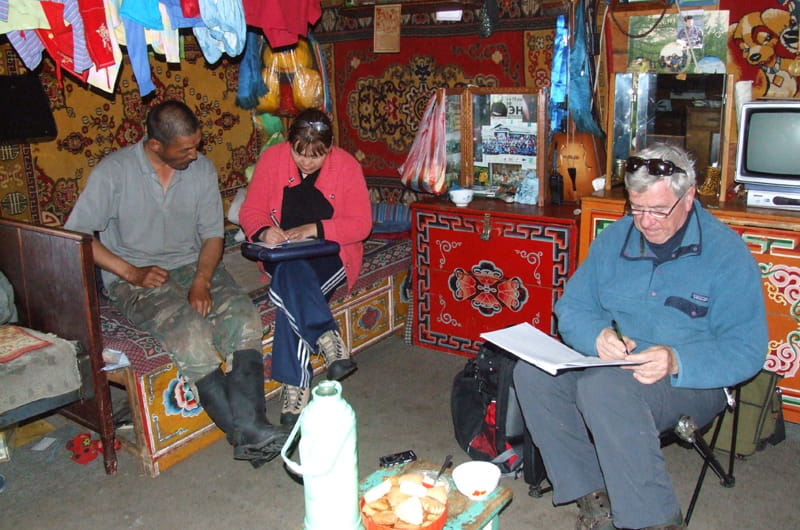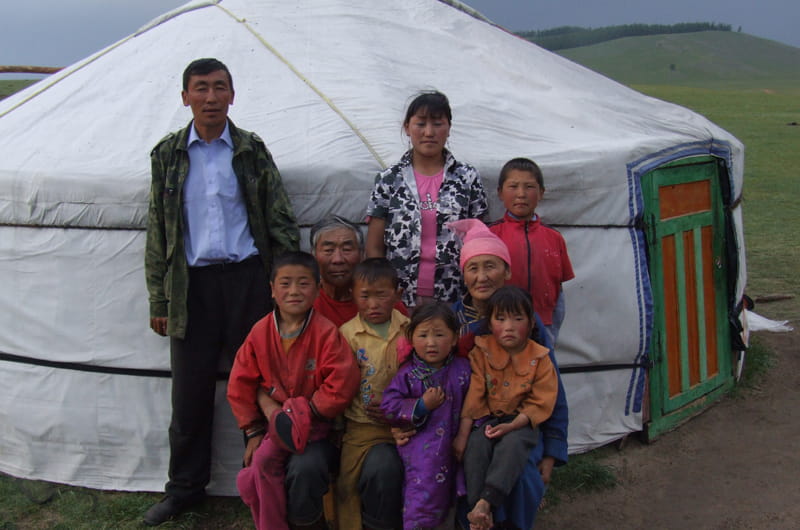Academy of Natural Sciences Researcher Proves Mongolian Herders Right in Climate Research
 By Frank Otto
By Frank Otto

- Bolstered by Research Consortium with Drexel, Jefferson’s Sidney Kimmel Cancer Center Earns NCI Comprehensive Cancer Center Designation
- No link between acetaminophen use during pregnancy and children's autism risk
- Faculty Highlights: Recent Awards and Grants
- Ribbon-Cutting Ceremony Marks Official Unveiling of Drexel Station at 30th Street

Mongolia is acutely experiencing climate change. Since 1941, the country has experienced an average increase of two degrees Celsius. For comparison, the United States’ average temperature has risen just about one degree Celsius in the past century.
That is fairly well-known and established among the scientific community. Clyde Goulden, PhD, curator emeritus and director of the Asia Center at the Academy of Natural Sciences of Drexel University, decided to take a step further and see what he could glean from those outside the scientific community in Mongolia: the nomadic herders who make up almost a third of the country’s population.
“It was very, very clear talking to the herders that they’re very sensitive to their environment and changes to it,” Goulden said. “We knew they would be able to tell us a lot about it.”
What the herders told Goulden and his colleagues was that they were seeing intense, new rainstorms that were rare when they were young. These storms — which are not common in the United States — were damaging to grazing field and livestock, dangerous to the herders and their families and seemed to be happening pretty frequently..
Goulden and most scientists knew there was more rain falling in certain areas of Mongolia due to the observed temperature increases. For every increase of one degree Celsius, the atmosphere can hold roughly 7 percent more water. With a two-degree rise, that amounted to at least 14 percent more water in the air than there was 70 years ago.
But scientists hadn’t noticed the intense storms the herders described. Called aadar boroo in Mongolian, these rains came in with almost no warning, dumped a heavy deluge of extremely cold water in almost no time (oftentimes more than one or two millimeters in a span of five minutes), and were accompanied by damaging winds.
The herders told of their livestock dying in the cold rains, heavy flooding destroying vegetation, and their gers (tent-like structures described as yurts in other areas of the world) being damaged by the wind and water.
One herder Goulden and his colleagues interviewed described roads being washed out and mattresses in his ger floating around.
“When we were kids, we never heard of animals dying because of the rain,” said another herder, who witnessed many of his animals succumb to hypothermia.
After speaking to almost 100 herder families, Goulden was saddled with finding proof for what they told him.
“You have to think, are they wrong?” he recalled. “Herding is a way of life in Mongolia, it goes back 3,000 years. These people are so in-tune with the land, but the data in the weather stations showed nothing.”

The reason that data didn’t show the aadar rains, Goulden said, was because they only measured rain for a 4-hour periods, mostly manually. If an aadar occurred, it might look the same as a gentle, beneficial day-long rain, or be obscured by later, less-dangerous precipitation.
But “serendipity” allowed for them to find a measurement of the aadar rains, according to Goulden.
One weather station in the Dalbay Valley, where many herders Goulden and his colleagues spoke with live, had been set to automatically record rain in five minute intervals. With such a fine measurement selected, data showed 40 instances of aadar rains between 2008 and 2012.
Aadar rains are frequently accompanied by thunder and lightning. Goulden and his colleagues found that thunderstorms reported at a nearby weather station were 2.5 times more likely to predict the occurrence of aadar rains at Dalbay than not. As such, historical data dating back to 1960 showed that thunderstorms have increased over the years, while the number of overall rainy days has not.
That pointed to an increase in the short, damaging aadar rains and a decrease in more benevolent forms of rain.
“It turns out that the herders were very accurate in what they told us,” Goulden said.
Taking locals into account when doing research is “essential when considering changes in the climate and the whole environment,” according to Goulden. Mongolia’s scientists still haven’t reacted to the findings of Goulden and his team, which were published in Climatic Change.
“I suspect that the herders feel that they are pretty much ignored by the government, even though they provide the bulk of the food for the population,” Goulden said. “Too often, herders are not only ignored, but also seldom appreciated for their contributions.”
To that end, herders in the country are now deciding what to do as the climate worsens and makes their traditional lifestyle more difficult. Among the options they’re considering are moving around more (a significant hardship), eliminating their cashmere goat herds (their biggest moneymakers — which since they eating whole plants instead of just pieces) or even just giving up herding altogether and moving to a city.
Although researchers like Goulden are working to further expose the effects of climate change and come up with solutions, many herders ultimately feel powerless.
“I am not well prepared,” one herder told Goulden. “What can you do with the weather? It’s beyond our control.”
In This Article
Contact
Drexel News is produced by
University Marketing and Communications.